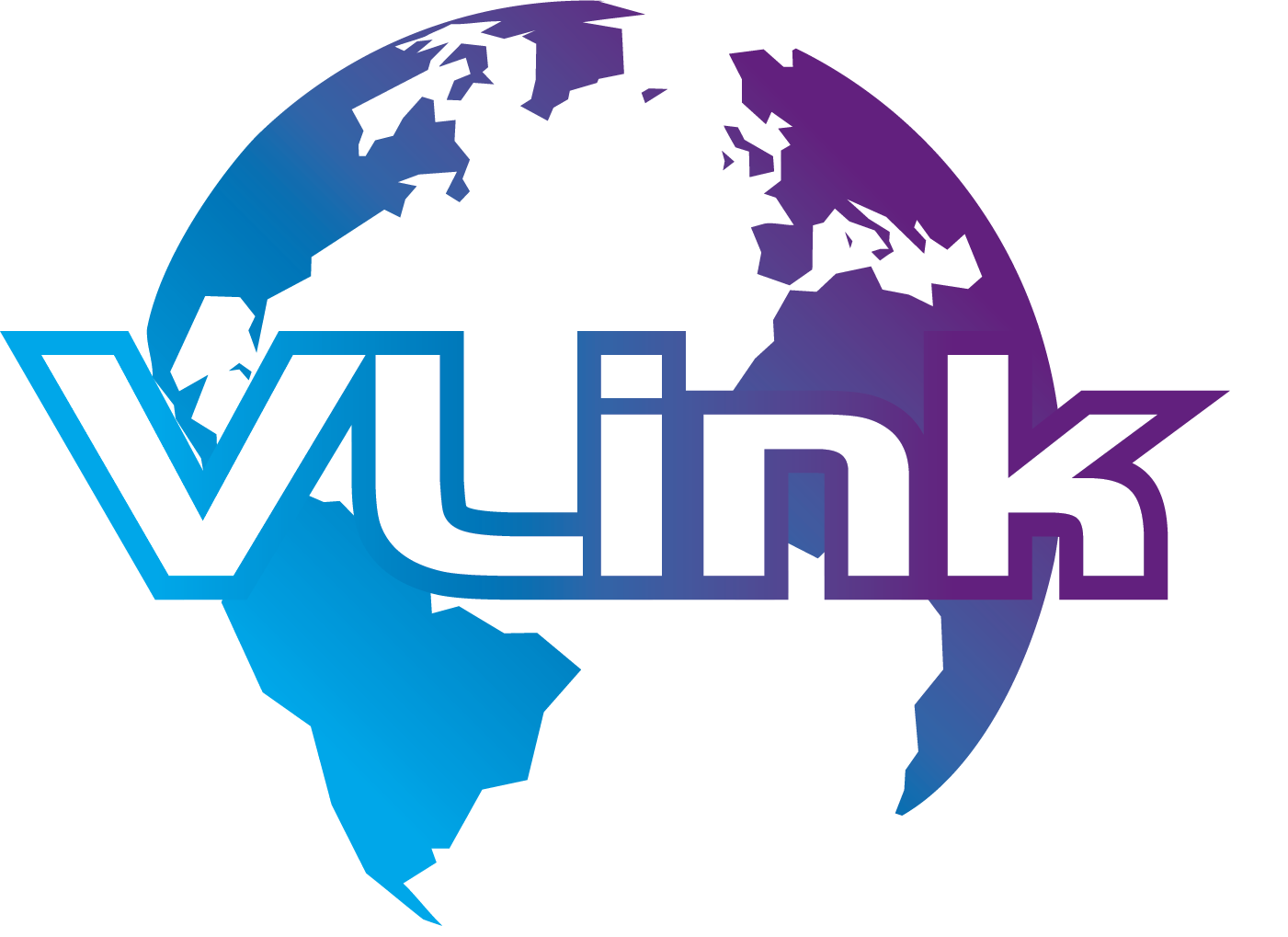In today's highly regulated world, organizations face increasing pressure to maintain compliance across a complex web of local, national, and international regulations. The complexity of compliance monitoring has surged, driven by rapid changes in data privacy laws, industry-specific mandates, and the globalization of business operations.
Traditional manual approaches and generic compliance tools are no longer sufficient to keep pace with evolving regulatory risks. As regulatory frameworks become increasingly complex, the need for intelligent, domain-specific solutions is evident. AI-powered compliance monitoring systems are emerging as the gold standard, offering real-time insights, proactive risk detection, and automated policy enforcement.
By leveraging advanced technologies, organizations can build compliance monitoring systems tailored to their unique operational and regulatory landscapes, ensuring both efficiency and peace of mind.
What Is a Domain-Specific Compliance Monitoring Agent?
A domain-specific compliance monitoring agent is an AI-driven system designed to continuously track, analyze, and enforce compliance requirements tailored to a particular industry or regulatory domain. Unlike traditional compliance tools that provide broad, one-size-fits-all solutions, these agents are customized to interpret nuanced policies, detect domain-relevant risks, and automate regulatory workflows.
Key Differences from Traditional Tools:
- Customization: Domain-specific agents are fine-tuned to understand sector-specific jargon, regulations, and risk patterns.
- Intelligence: They leverage AI compliance tools, such as best large language models (LLMs) to interpret complex policies and flag subtle anomalies.
- Agentic Processes: These agents autonomously monitor data flows, trigger alerts, and suggest remediation actions, thereby reducing the need for manual intervention and minimizing human error.
By deploying a compliance monitoring agent tailored to their domain, organizations can achieve higher accuracy, faster response times, and a more robust compliance posture.
Why Off-the-Shelf Solutions Fail in Regulated Industries
Top industries like healthcare, finance, legal, and energy operate under stringent and ever-changing regulatory regimes. Off-the-shelf compliance automation software often falls short because:
- Lack of Customization: Generic monitoring tools often overlook sector-specific nuances, resulting in false positives or missed risks.
- Limited Real-Time Capabilities: Many solutions lack real-time risk monitoring and automated policy enforcement, resulting in compliance gaps.
- Inflexibility: Static rule sets and infrequent updates hinder the ability to adapt to new regulations or unique business workflows.
For example, a healthcare provider must comply with HIPAA requirements, while a financial institution must adhere to anti-money laundering (AML) mandates. Only a domain-specific compliance monitoring agent can deliver the precision and agility needed for these regulated environments.
Architecture: Building Blocks of an AI-Powered Compliance Agent
Building a robust compliance monitoring system requires a modular architecture that integrates advanced AI capabilities with enterprise data flows. Here are the core components:

1. Data Ingestion Pipelines
To build an effective compliance monitoring agent, the first critical step involves establishing robust data ingestion pipelines. These pipelines are responsible for collecting both structured and unstructured data from a multitude of internal and external sources. Internal systems can include Enterprise Resource Planning (ERP) software, Customer Relationship Management (CRM) tools, Human Resources Management Systems (HRMS), and even custom-built operational databases.
This data might encompass financial transactions, employee records, customer interactions, and operational logs, all of which can contain critical compliance-related information. Equally important is the ingestion of data from external sources. This includes real-time feeds from regulatory bodies (e.g., SEC, FDA, PCI DSS), industry-specific news outlets, legal databases, and public records.
The ability to pull in external data ensures that the compliance agent is always operating with the most current regulatory information and can detect emerging risks. A well-designed data ingestion pipeline must prioritize security, ensuring that sensitive data is handled in compliance with relevant privacy regulations (such as GDPR, HIPAA, and India’s DPDP Act) from the moment it is collected. Scalability is another key consideration, as the volume and velocity of data can fluctuate significantly.
The pipeline should be capable of handling large datasets and high-speed data streams without performance degradation. Furthermore, data quality and integrity checks should be built into the ingestion process to ensure that the information fed into the system is accurate and reliable, forming a trustworthy foundation for compliance analysis.
2. Natural Language Rulesets
At the heart of a domain-specific compliance monitoring agent lies the ability to understand and interpret complex regulations. This is achieved through the creation of natural language rulesets. These rule sets are essentially machine-readable representations of regulatory requirements, internal company policies, and industry best practices. Instead of rigid, code-based rules, these rulesets are designed to be more flexible and interpretable, often leveraging natural language processing (NLP) techniques.
The process involves encoding the nuances of legal and regulatory texts into a format that the AI can process. This might include defining specific keywords, phrases, conditions, and actions associated with various compliance obligations. For example, a rule might state: “Any transaction exceeding $10,000 involving a customer from a high-risk jurisdiction must be flagged for review within 24 hours.”
A significant advantage of using natural language rulesets is their adaptability. As regulations evolve and new policies are introduced, the rules can be updated relatively easily, often without extensive reprogramming. NLP models can be trained to recognize new legal terminology, identify changes in regulatory guidance, and automatically update or suggest modifications to existing rules.
This continuous learning capability ensures that the compliance monitoring agent remains current and effective in a dynamic regulatory environment, preventing the system from becoming outdated and missing new compliance risks. This flexibility is crucial for maintaining regulatory compliance monitoring in fast-paced industries.
3. LLM-Based Policy Comprehension
Large Language Models (LLMs) play a pivotal role in enabling a compliance monitoring agent to understand truly and reason about complex policy documents. Traditional rule-based systems often struggle with the ambiguity, subtle nuances, and sheer volume of legal and regulatory texts. LLMs, with their advanced capabilities in natural language understanding and generation, can overcome these limitations.
By deploying LLMs, the compliance agent gains the ability to parse, interpret, and contextualize vast amounts of unstructured data from policy documents, legal precedents, and regulatory advisories. This involves more than just keyword matching; LLMs can identify relationships between different clauses, understand the intent behind a regulation, and even infer implied obligations. For instance, an LLM can distinguish between a mandatory requirement and a guideline, or determine how a new regulation affects existing internal policies.
Furthermore, LLMs can be trained on domain-specific corpora, allowing them to become highly proficient in the specialized language and terminology of a particular industry (e.g., healthcare regulations, financial compliance standards). This deep understanding enables the agent to reason about ambiguous or evolving regulatory language, providing more accurate and insightful compliance assessments.
The integration of LLMs transforms the compliance monitoring agent from a simple rule-checker into an intelligent system capable of comprehending the intricate web of regulatory requirements, significantly enhancing its ability to track compliance effectively.
4. Anomaly Detection Engine
The anomaly detection engine is the analytical core of the AI-powered compliance agent, responsible for identifying deviations from expected behavior or established compliance baselines. This component leverages a suite of advanced AI algorithms, including machine learning models, statistical methods, and deep learning techniques, to analyze the ingested data continuously.
The engine learns what constitutes "normal" and compliant activity within the defined domain. This learning can be supervised (trained on labeled examples of compliant and non-compliant behaviors) or unsupervised (identifying patterns that deviate from the norm without explicit labels).
Once anomalies are detected, the engine prioritizes alerts based on their perceived risk severity and potential business impact. Not all anomalies are equal; some might be minor deviations requiring simple adjustments, while others could represent significant compliance breaches or emerging threats.
The prioritization mechanism ensures that high-risk incidents are brought to the immediate attention of compliance officers, allowing for rapid investigation and remediation. This proactive identification of risks is crucial for maintaining a strong compliance posture and mitigating potential penalties or reputational damage.
5. Alert Systems
An effective compliance monitoring agent is only as good as its ability to communicate critical information promptly. This is where the alert systems come into play. Once the anomaly detection engine identifies a potential compliance breach or a significant deviation, the alert systems are responsible for delivering real-time notifications to the relevant stakeholders.
These notifications can take various forms, ensuring that the information reaches the right people through their preferred channels of communication. Common alert mechanisms include:
- Dashboards: Centralized, dynamic dashboards provide a holistic view of the organization's compliance posture, highlighting active alerts, trending risks, and overall compliance scores. These visual representations allow compliance officers and management to grasp the situation quickly.
- Email Notifications: Automated emails can be sent to specific individuals or teams responsible for addressing the detected issue, providing details about the anomaly, its severity, and suggested next steps.
- SMS/Push Notifications: For high-priority or critical alerts, SMS messages or mobile app push notifications can ensure immediate attention, especially for personnel who are frequently on the go.
- Integration with Collaboration Tools: Alerts can be pushed into team communication platforms (e.g., Slack, Microsoft Teams) to facilitate rapid discussion and coordination among incident response teams.
Crucially, the alert systems should be tightly integrated with existing incident response workflows. This means that an alert should not just inform but also trigger pre-defined remediation processes. This architecture ensures that your AI compliance agent is both comprehensive and adaptable, capable of tracking compliance across multiple domains and regulatory environments.
Step-by-Step Guide: How to Build a Domain-Specific Compliance Monitoring Agent
Building a domain-specific agent requires a structured approach. Here’s a step-by-step guide:

1. Define Domain-Specific Regulations
The foundational step in building a domain-specific compliance monitoring agent is to meticulously define all relevant regulatory frameworks that govern your organization's operations within its specific industry and geographical locations. This goes beyond a general understanding of compliance; it requires a thorough examination of the legal and regulatory landscape that directly impacts your business.
Begin by identifying all applicable national, regional, and international regulations. For instance, a financial institution operating in both the US and Canada would need to consider US SOX rules, the Dodd-Frank Act, Canada’s PIPEDA, and various provincial financial regulations. A healthcare provider would focus on HIPAA, HITECH, and state-specific laws regarding patient privacy. Companies handling data globally must contend with the EU GDPR and India’s DPDP Act, among others.
Once the regulatory frameworks are identified, the next crucial phase is to gather all pertinent policy documents, compliance checklists, and audit requirements. This includes official government publications, industry standards, guidance documents from regulatory bodies, and internal company policies. It's not enough to simply list the regulations; you must acquire the detailed texts and interpretations.
These documents will serve as the primary source material for training your AI models and defining the rulesets for your compliance agent. This comprehensive understanding ensures that your compliance management system is built on a solid, legally informed foundation.
2. Choose a Monitoring Tech Stack
Selecting the right technology stack is paramount for the scalability, efficiency, and future adaptability of your compliance monitoring agent. The choices made here will dictate how effectively your agent can ingest, process, and analyze compliance data.
For data ingestion, prioritize scalable and robust tools that can handle both batch and real-time data streams from diverse sources.
Technologies like Apache Kafka or AWS Kinesis are excellent choices for streaming data, allowing for high-throughput and low-latency data capture from various operational systems and external feeds. For batch processing and large-scale data storage, consider data lakes built on platforms like AWS S3, Google Cloud Storage, or Azure Data Lake, complemented by data warehousing solutions for structured data analysis.
When it comes to AI/ML platforms, opt for those that provide comprehensive support for Large Language Models (LLMs) and offer a rich ecosystem of machine learning services. Platforms such as OpenAI (for access to advanced LLMs like GPT-4), Google Vertex AI, or Azure Machine Learning provide managed services for training, deploying, and scaling custom LLMs and other AI models. These platforms also offer tools for natural language processing, anomaly detection, and data analytics, which are crucial for the compliance agent's intelligence.
Crucially, ensure that your chosen tech stack is compatible with your existing enterprise systems. Seamless integration with your current ERP, CRM, HRMS, and other operational custom software development is vital to avoid data silos and ensure a unified view of compliance. Prioritize technologies that offer well-documented APIs and SDKs to facilitate seamless integration, enabling smooth data flow and interaction between the compliance agent and your broader IT infrastructure. This strategic selection forms the backbone of a highly functional compliance automation software.
3. Integrate AI/LLM Capabilities
Integrating Artificial Intelligence, particularly Large Language Models (LLMs), is what transforms a basic compliance system into an intelligent, adaptive compliance monitoring agent. This step is about imbuing your agent with the ability to "understand" and "reason" about complex regulatory information.
The core of this integration involves training LLMs on your domain-specific regulations and internal company policies. This isn't just about feeding raw text; it requires careful curation of datasets that include legal documents, regulatory updates, audit reports, and even historical compliance incidents. Fine-tuning an LLM on this specialized corpus enables it to grasp the nuances, jargon, and intricate relationships within your specific regulatory landscape. For instance, an LLM trained on financial regulations will better understand terms like "AML," "KYC," and "SAR" in their specific context.
Beyond just understanding, Natural Language Processing (NLP) pipelines are crucial for extracting actionable insights from unstructured data. These pipelines can perform:
- Document Classification: Automatically categorize incoming regulatory updates or internal documents based on their content and relevance to specific compliance areas.
- Entity Extraction: Identify and extract key entities, including dates, monetary values, names of regulations, responsible parties, and specific compliance requirements, from text.
- Sentiment Analysis: Although less direct for compliance purposes, it can be useful in understanding the market or public perception of specific regulatory changes or compliance issues.
The integration of AI/LLM capabilities is not a one-time event. Regulatory landscapes are constantly evolving. Therefore, it is imperative to continuously update and retrain your models with new regulatory guidance, legal precedents, and internal policy changes. This continuous learning ensures that your compliance agent remains intelligent, accurate, and proactive in detecting and responding to emerging compliance risks, embodying the essence of an intelligent compliance monitoring system.
4. Automate Policy Enforcement Workflows
Once the compliance monitoring agent has identified potential issues based on its understanding of regulations and anomalies, the next crucial step is to automate the enforcement of policies and remediation steps. This moves beyond mere detection to proactive action, significantly reducing manual effort and response times.
Building robust rule engines is central to this automation. These engines translate the AI's insights into actionable steps. For example, if the anomaly detection engine flags a transaction as potentially suspicious (based on AML rules), the rule engine could automatically:
- Generate a Suspicious Activity Report (SAR) template, pre-filling relevant transaction details.
- Initiate a review workflow, assigning the case to a compliance officer.
- Place a temporary hold on the transaction until further investigation.
- Send a notification to the relevant legal or financial teams.
The key is to integrate these automated processes with workflow automation platforms. Tools like UiPath, Zapier, or custom-built internal orchestration systems can bridge the gap between the compliance agent's findings and actual business operations. This integration allows the agent to trigger actions across various enterprise systems, such as:
- Updating records in a CRM or ERP system.
- Generating compliance certificates.
- Sending automated follow-up emails to stakeholders.
- Triggering employee training modules based on detected knowledge gaps.
This automation not only ensures consistent and timely enforcement of policies but also frees up human compliance officers to focus on more complex investigations and strategic initiatives. By automating compliance checks and remediation, organizations can achieve a more efficient, accurate, and scalable compliance posture, embodying the true value of custom compliance solutions.
5. Set Up Dashboards & Alert Systems
Effective compliance monitoring is not just about detecting issues; it's about making those insights accessible and actionable to the right people at the right time. This is achieved by setting up comprehensive dashboards and robust alert systems. Deploying real-time dashboards is critical for providing an intuitive and centralized view of your organization's compliance posture.
These dashboards should visualize key performance indicators (KPIs) and risk metrics, such as:
- Overall compliance score across different departments or regulatory domains.
- Number of open compliance incidents and their severity.
- Trends in compliance breaches over time.
- Progress on remediation efforts.
- Heatmaps indicating areas of high compliance risk.
The dashboards should be customizable to different user roles, providing relevant information to compliance officers, legal teams, executive leadership, and operational managers. Visualizations, such as charts, graphs, and heatmaps, make complex data easily digestible, enabling rapid understanding and informed decision-making.
Complementing the dashboards are multi-channel alert systems configured for high-priority incidents. While dashboards provide an overview, alerts ensure immediate notification for critical events. These alerts should be highly configurable, allowing you to define:
- Trigger Conditions: What constitutes a critical incident that warrants an alert (e.g., specific transaction thresholds, unauthorized data access attempts, regulatory deadline approaching).
- Recipient Groups: Who receives the alert (e.g., specific compliance officers, IT security, legal counsel).
- Notification Channels: How the alert is delivered (e.g., email, SMS, push notifications to a mobile app, integration with internal communication platforms like Slack or Microsoft Teams).
- Escalation Paths: What happens if an alert is not acknowledged or resolved within a defined timeframe (e.g., escalate to a higher-level manager).
By providing both an overarching visual summary and immediate, targeted alerts, organizations ensure that potential compliance issues are not only detected but also acted upon swiftly, thereby strengthening their real-time risk monitoring AI capabilities.
6. Run Simulations and Audits
The final, continuous step in building and maintaining a highly effective domain-specific compliance monitoring agent is to test and audit its performance rigorously. This ensures that the agent not only functions as intended but also accurately and reliably identifies compliance risks.
Begin by running comprehensive simulations using both historical and synthetic data. These simulations should mimic real-world scenarios, including both compliant and non-compliant activities, to test the agent's ability to:
- Accurately detect anomalies: Can it identify subtle deviations that might indicate a breach?
- Correctly interpret regulations: Does it apply the rules as expected across various data inputs?
- Trigger appropriate alerts: Are the right people notified with the right information at the right time?
- Automate workflows correctly: Do the automated remediation steps execute as planned?
Simulations help fine-tune the rule sets, improve the accuracy of the AI models, and identify any blind spots in the agent's design. This iterative testing process enables continuous improvement before deployment in the real world.
Beyond simulations, conducting regular audits is paramount. These audits should be both internal and, where appropriate, external. Audits serve several critical purposes:
- Validate Compliance: Ensure that the agent is adhering to all relevant regulations and internal policies. This can involve comparing the agent's findings with manual reviews of a sample of transactions or activities.
- Model Accuracy: Assess the performance of the underlying AI/ML models, especially the LLMs and anomaly detection engines. This involves evaluating false positives (non-compliant items flagged as compliant) and false negatives (compliant items flagged as non-compliant), and taking corrective action.
- Explainability and Transparency: For highly regulated industries, understanding why the AI made a certain decision is crucial. Audits should ensure that the agent's decisions are explainable and that a clear audit trail of its actions is maintained.
- Adaptation to Changes: Verify that the agent has successfully incorporated new regulatory updates and policy changes into its rulesets and models.
By consistently running simulations and conducting thorough audits, organizations can build a compliance monitoring system that is not only proactive in risk detection but also resilient, trustworthy, and continuously optimized for the dynamic regulatory landscape. This systematic approach contributes significantly to achieving a high standard of regulatory compliance monitoring.
Featured Snippet Checklist:
- Identify regulations
- Build data pipelines
- Train LLMs
- Automate workflows
- Set up dashboards
- Test and audit
By following these steps, organizations can build a compliance monitoring system that is both proactive and resilient.
PRO TIPS: Integrating Retrieval-Augmented Generation (RAG) technology markedly improves compliance effectiveness by coupling large language models with real-time semantic retrieval of relevant legal documents, policies, and precedents. Unlike standalone LLMs, RAG continuously fetches and verifies authoritative compliance texts during inference, minimizing hallucinations or outdated advice. This approach supports precise, context-aware compliance interpretations that can dynamically adapt to regulatory changes. Organizations using RAG can thus maintain a highly defensible and current compliance system even in rapidly evolving legal environments.
Key Features to Include in Your Agent
To maximize effectiveness and user adoption, your compliance monitoring agent should offer a comprehensive suite of features designed to provide actionable insights and streamline compliance processes:

- Real-Time Alerts: Immediate notification of policy breaches or suspicious activities is paramount. The system should be able to detect anomalies and trigger alerts instantly, ensuring that compliance teams can respond proactively to minimize potential damage or penalties. This feature is fundamental for real-time monitoring and regulatory alerts.
- Compliance Score Calculation: A quantitative assessment of compliance posture across various business units, departments, or regulatory domains provides a clear and easily digestible overview of risk. This score can be based on the number and severity of detected incidents, the timeliness of remediation, and adherence to established policies, allowing for quick identification of areas needing improvement.
- Change Tracking: Automated logging of policy updates, user actions, and regulatory changes is crucial for maintaining an auditable trail and understanding the evolution of compliance requirements. This feature ensures transparency and accountability, providing a historical record of all compliance-related activities and modifications.
- Role-Based Access: Implementing granular permissions ensures that only authorized users can view, modify, or interact with sensitive compliance data and configurations. This is crucial for ensuring data security and preventing unauthorized access or changes to the compliance system, aligning with best practices for securing compliance management systems.
- Geo-Targeted Compliance Checks: In today's globalized business environment, regulatory requirements often vary significantly by geography. The agent should be capable of adapting its monitoring and rule enforcement to specific regional regulations (e.g., US SOX rules, Canada’s PIPEDA, EU GDPR, India’s DPDP Act). This ensures that compliance is maintained consistently across all operational locations.
These features collectively empower organizations to manage risk monitoring AI efficiently, ensuring the agent remains relevant and actionable in dynamic regulatory landscapes, and ultimately strengthening their overall compliance posture.
Use Cases Across Industries
The versatility of a domain-specific compliance monitoring agent makes it an invaluable tool across various highly regulated industries, demonstrating its impact in real-time monitoring and regulatory alerts:
BFSI: Anti-Money Laundering (AML)
In the Banking, Financial Services, and Insurance (BFSI) sector, AML compliance is a non-negotiable imperative. A domain-specific compliance monitoring agent can revolutionize how financial institutions combat illicit financial activities.
- Real-time monitoring of transactions for suspicious patterns: The agent continuously analyzes vast streams of financial transactions, identifying anomalies that deviate from typical customer behavior or established thresholds. This includes unusual transaction volumes, frequent small deposits followed by large withdrawals, or rapid movement of funds across multiple accounts.
- Automated SAR (Suspicious Activity Report) generation: Upon detecting suspicious activity that meets predefined criteria, the agent can automatically generate a draft Suspicious Activity Report (SAR), pre-filling it with relevant transaction details, customer information, and the nature of the suspicious pattern. This significantly reduces the manual effort and time required for reporting, ensuring timely submission to regulatory bodies like FinCEN in the US or FINTRAC in Canada.
Healthcare: HIPAA Monitoring
For healthcare service providers, safeguarding patient privacy is paramount, governed by stringent regulations like HIPAA in the US. A domain-specific agent can ensure continuous adherence to the requirements.
- Continuous validation of patient data handling: The agent monitors access logs, data transfers, and system usage patterns to ensure that Protected Health Information (PHI) is accessed, used, and shared only by authorized personnel and following HIPAA guidelines. It can flag instances of unauthorized access, unusual data queries, or attempts to transfer PHI to unapproved devices or networks.
- Automated breach detection and reporting: In the event of a potential data breach, the agent can immediately detect the incident (e.g., unauthorized data exfiltration) and trigger automated breach notification workflows. This includes generating initial breach reports, alerting designated privacy officers, and initiating communication protocols as required by HIPAA's breach notification rules, dramatically shortening response times.
Manufacturing: Environmental Compliance
Manufacturing operations often have significant environmental footprints, requiring strict adherence to environmental regulations established by bodies such as the EPA or local environmental agencies.
- Monitoring emissions and waste management: The agent integrates with IoT sensors and operational systems to continuously track and analyze data related to factory emissions (e.g., air pollutants, wastewater discharge) and waste generation. It can monitor parameters against permissible limits and detect any deviations from them.
- Alerting on deviations from EPA or local environmental standards: If emission levels exceed regulatory thresholds or waste disposal practices deviate from approved procedures, the agent triggers immediate alerts to environmental compliance managers. This allows for swift corrective action, preventing regulatory fines and environmental damage.
Government: Data Retention & Audit Trails
Government agencies handle vast amounts of public and sensitive data, necessitating robust data retention policies and transparent audit trails.
- Ensuring public records compliance: The agent can monitor data storage, archiving, and deletion processes to ensure that public records are retained for the legally mandated periods, preventing premature destruction or unauthorized modification. It can also ensure that data is accessible when required for public information requests.
- Automated audit trail generation for transparency: For every data access, modification, or system interaction, the agent automatically generates detailed, immutable audit trails. This provides irrefutable evidence for transparency, accountability, and forensic analysis in case of a data request, legal challenge, or internal investigation.
These industry-specific compliance applications demonstrate the versatility and profound impact of domain-specific agents in real-time monitoring and regulatory alerts, transforming compliance from a reactive burden into a proactive strategic advantage.
Common Pitfalls to Avoid
Building a domain-specific compliance monitoring agent offers immense benefits, but several common pitfalls can derail its effectiveness. Being aware of these and taking proactive steps to avoid them is crucial for success.
Do:
- Continuously train LLMs on new regulations and internal policies: The regulatory landscape is dynamic. Stagnant AI models will quickly become obsolete. Implement a pipeline for continuous learning and model updates, ensuring the latest legal texts, enforcement actions, and internal policy adjustments always inform your LLMs. This proactive approach ensures your agent remains highly accurate in its interpretations.
- Maintain detailed audit trails for all compliance actions: Transparency and accountability are paramount in compliance. Every action taken by the agent—from data ingestion and analysis to alert generation and automated remediation—must be meticulously logged. This detailed audit trail is essential for demonstrating compliance to regulators, investigating incidents, and understanding the agent's decision-making process.
- Regularly test and update rule sets: Beyond LLM training, the explicit rule sets that define specific compliance checks require constant review and refinement. Regulations change, and so do business processes. Periodically review your rule sets against current regulatory guidance and internal operational realities to ensure they remain accurate, relevant, and do not generate excessive false positives or miss critical risks.
Don’t:
- Rely solely on generic models—customize for your domain: While foundational LLMs are powerful, a "one-size-fits-all" approach will lead to inaccuracies in specialized regulatory environments. Generic models lack the nuanced understanding of industry-specific jargon, historical precedents, and implicit expectations. Customizing and fine-tuning your LLMs on domain-specific data is non-negotiable for achieving high accuracy and relevance in areas like legal compliance management systems needs.
- Overgeneralize rules, risking false positives or missed risks: While it might seem efficient to create broad rules, overgeneralization often leads to two detrimental outcomes:
- False positives: The agent flags too many benign activities as non-compliant, leading to "alert fatigue" and a loss of trust in the system.
- Missed risks: Overly general rules might overlook subtle, but critical, violations that require a more granular understanding of the domain. Strive for precision in rule definition.
- Ignore the importance of explainability and transparency in AI decisions: Especially in regulated industries, "black box" AI models are unacceptable. Regulators, auditors, and internal stakeholders need to understand why the AI made a particular decision. Design your agent with explainable AI (XAI) principles in mind, providing clear justifications for alerts and automated actions. This builds trust and ensures defensibility of your compliance automation efforts.
Avoiding these pitfalls will help ensure your compliance automation efforts are both effective and defensible, leading to a robust and reliable compliance management system.
Future Trends: Agentic Automation in Compliance
The compliance landscape is rapidly evolving, driven by advancements in AI and the increasing complexity of global regulations. Several key trends are set to reshape the field, pushing towards more sophisticated and autonomous solutions:

Autonomous Compliance Agents:
The future will see the emergence of truly autonomous systems that can adapt to regulatory changes with minimal human intervention. These agents will not only monitor but also proactively modify their own rule sets, retrain their underlying AI models, and even suggest necessary operational adjustments in response to new regulations. This level of self-sufficiency will transform the role of compliance officers from reactive enforcers to strategic oversight managers.
Cross-Border Policy Adaptation:
As businesses operate across multiple jurisdictions, the challenge of managing diverse and often conflicting regulatory frameworks becomes increasingly significant. Future compliance agents will be capable of interpreting and enforcing regulations across numerous legal and cultural contexts. They will understand the nuances of cross-border data transfers (e.g., GDPR, CCPA, PIPEDA, DPDP Act), tax compliance, and trade regulations, providing integrated solutions for global operations. This capability will be crucial for companies seeking to scale internationally while maintaining stringent compliance.
Generative Policy Explanation:
One of the biggest hurdles in compliance is the sheer volume and complexity of legal language. AI-driven tools will leverage generative AI to provide plain-language explanations of complex policies for various stakeholders. This means an agent could automatically summarize a new regulatory update for the executive team, extract specific actionable items for an operational manager, or explain the implications of a policy change to employees in a clear and easily understandable format. This will democratize access to compliance knowledge and foster a more compliant culture across the organization.
Staying ahead of these compliance AI trends will position your organization as a leader in agentic process automation, turning compliance from a burdensome obligation into a source of competitive advantage. These advancements will move beyond current AI compliance monitoring tool capabilities to fully autonomous and intelligent systems.
VLink Expertise for Domain-Specific Compliance Agents
At VLink, we understand the intricate and evolving landscape of regulatory compliance. Our cybersecurity consulting services expertise lies in leveraging cutting-edge AI and advanced technological frameworks to build bespoke compliance monitoring agents that are precisely tailored to your industry's unique demands.
We don't offer generic solutions; instead, we partner with you to develop intelligent systems that integrate seamlessly with your existing infrastructure, ensuring real-time risk detection, automated policy enforcement, and robust data integrity.
Our dedicated team of compliance experts ensures that every agent is optimized for performance, scalability, and adherence to the most stringent global standards, including US SOX rules, Canada’s PIPEDA, EU GDPR, and India’s DPDP Act. With VLink, you gain a powerful ally in transforming your compliance strategy from a reactive burden into a proactive competitive advantage.
Final Thoughts: Why Now Is the Time to Build
The convergence of AI, unprecedented regulatory complexity, and the relentless pace of digital transformation has made intelligent compliance monitoring not just a competitive advantage but an absolute necessity for organizations operating in the modern world. Manual processes and outdated, generic compliance software are simply incapable of keeping pace with the dynamic regulatory environment, leaving organizations vulnerable to significant risks, hefty fines, and severe reputational damage.
Furthermore, investing in intelligent compliance now provides a distinct competitive advantage. Organizations that embrace these advanced solutions will be better positioned to navigate regulatory complexities, build trust with stakeholders, and operate with greater efficiency and assurance. Now is the time to invest in intelligent compliance—before your competitors do—and secure your position as a resilient and responsible market leader.
Ready to revolutionize your compliance strategy? Talk to a Compliance Automation Expert today and discover how a domain-specific compliance monitoring agent can transform your risk management and regulatory posture.










 Shivisha Patel
Shivisha Patel

















